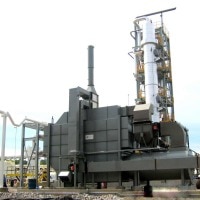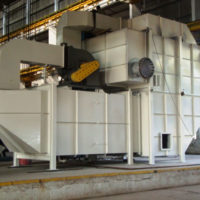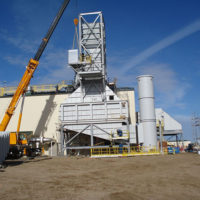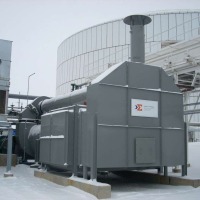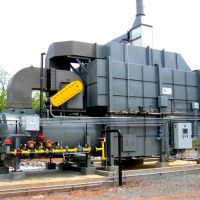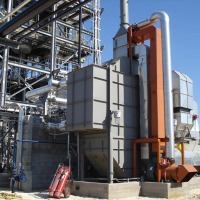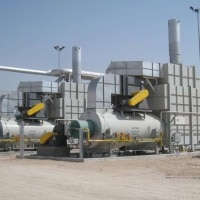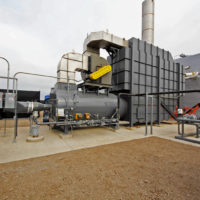Direct Fired Heaters
Sigma Thermal offers convection style, API 560, and non-API radiant convective heaters from 1MM to 80MM Btu/hr.
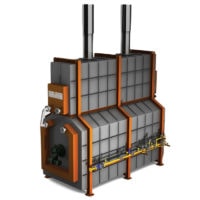 A direct fired heater is a style of heater in which a burner provides hot gasses that transfer their heat energy to a process liquid or gas flowing directly through coils installed inside the heater vessel. Direct fired heaters can utilize radiant and/or convection heat transfer sections, and can be configured in many different ways depending on the customers’ specific requirements. Due to the flexibility in design, virtually any style of furnace burner can be used in single or multi-burner configurations. For help selecting the right solution for your project, contact our application engineers today.
A direct fired heater is a style of heater in which a burner provides hot gasses that transfer their heat energy to a process liquid or gas flowing directly through coils installed inside the heater vessel. Direct fired heaters can utilize radiant and/or convection heat transfer sections, and can be configured in many different ways depending on the customers’ specific requirements. Due to the flexibility in design, virtually any style of furnace burner can be used in single or multi-burner configurations. For help selecting the right solution for your project, contact our application engineers today.
Convection Heater
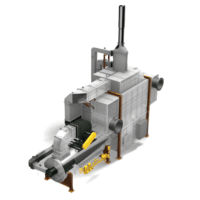
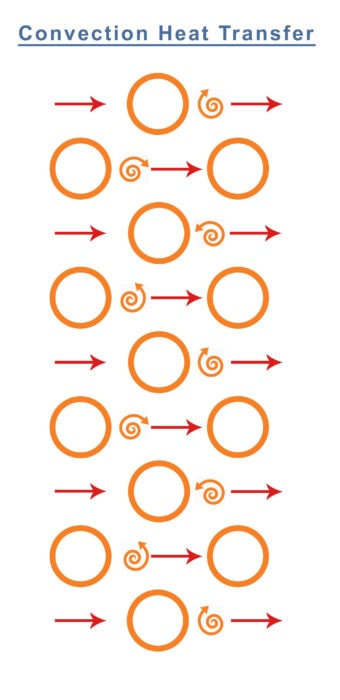 A convection style heater offers the benefits of a direct fired heater while eliminating some of the drawbacks associated with radiant heat transfer. Radiant heat transfer can be undesirable in certain temperature-sensitive applications as radiant heat transfer tends to be more intense and unevenly distributed around the coil surface. Sigma Thermal’s convection style direct fired heater utilizes a separate combustion chamber and flue gas recirculation to reduce combustion chamber temperatures to 1,400F, thereby minimizing the impact of radiant heat transfer to the process coil.
A convection style heater offers the benefits of a direct fired heater while eliminating some of the drawbacks associated with radiant heat transfer. Radiant heat transfer can be undesirable in certain temperature-sensitive applications as radiant heat transfer tends to be more intense and unevenly distributed around the coil surface. Sigma Thermal’s convection style direct fired heater utilizes a separate combustion chamber and flue gas recirculation to reduce combustion chamber temperatures to 1,400F, thereby minimizing the impact of radiant heat transfer to the process coil.
Design Features
| Row by Row Sizing Method | This detailed sizing method allows for accurate prediction and precise control of heat flux and film temperatures on each individual tube row. |
| Coil Configuration Flexibility | Coil flow path and metallurgy are engineered for each customer’s process requirements. Sigma Thermal has extensive experience in process coil design for multi-phase fluids, viscous hydrocarbons, suspended solids, and various gaseous mixtures. |
| Fuel Source and Burner Flexibility | Standard or engineered burner configurations are available for use with both traditional and alternative fuel sources. Low emissions burners can be supplied to meet all emission requirements (e.g., Low NOx, Best Available Control Technology). |
| Efficiency | Base efficiencies can exceed 90% (LHV Basis) depending on process inlet temperature, and with an optional economizer can exceed 93% (LHV basis). |
| Advanced Control Systems | Complete control systems are engineered to optimize system safety and performance. Sigma thermal can supply simple and cost effective standard panels, as well as full process automation and PLC based combustion control / BMS. |
Radiant–Convective Heater

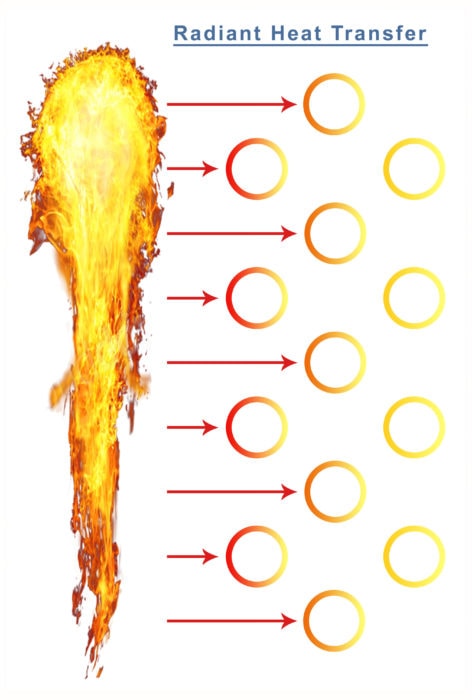 A radiant–convective style heater is the most well-known and commonly used style of direct fired heater. These heaters utilize a bare tube radiant zone in combination with a bare / finned convection section. Vertical cylindrical, A-frame, and cabin style are the most common configurations. Sigma Thermal offers all types of radiant–convective heater designs including API 560 compliant systems.
A radiant–convective style heater is the most well-known and commonly used style of direct fired heater. These heaters utilize a bare tube radiant zone in combination with a bare / finned convection section. Vertical cylindrical, A-frame, and cabin style are the most common configurations. Sigma Thermal offers all types of radiant–convective heater designs including API 560 compliant systems.
Design Features
| Direct Fired Design Flexibility | Careful radiant zone design and row by row convection coil design allow for optimal furnace configuration. Sigma Thermal has extensive experience in process coil design for multi-phase fluids, viscous hydrocarbons, suspended solids, and various gaseous mixtures. |
| Fuel Source and Burner Flexibility | Standard or engineered burner configurations are available for use with both traditional and alternative fuel sources. Both natural draft and forced draft units available. Low emissions burners can be supplied to meet all emission requirements (e.g., Low NOx, Best Available Control Technology). |
| Efficiency | Base efficiencies can exceed 90% (LHV Basis) depending on process inlet temperature, and with an optional economizer can exceed 93% (LHV basis). |
| Advanced Control Systems | Complete control systems are engineered to optimize system safety and performance. Sigma thermal can supply simple and cost effective standard panels, as well as full process automation and PLC based combustion control / BMS. |





